
Hvac Diagnostic Symptom Chart
Manufacturers of refrigerants, controls, and other suppliers distribute hundreds of thousands of pressure-temperature charts to the trade every year. It would be rare indeed to find service technicians who could not put their hands on a pressure-temperature (P-T) card at a minute's notice. In spite of the widespread availability and apparent reference to the pressure-temperature relationship.
This troubleshooting chart was posted a few years ago and it has helped
Why Are PT Charts Essential? Refrigerant PT charts are indispensable for several reasons: System Troubleshooting: HVAC technicians use PT charts to diagnose issues with cooling systems. By measuring the pressure and temperature at various points in the system, they can pinpoint problems like refrigerant leaks, blockages, or inefficient operation.
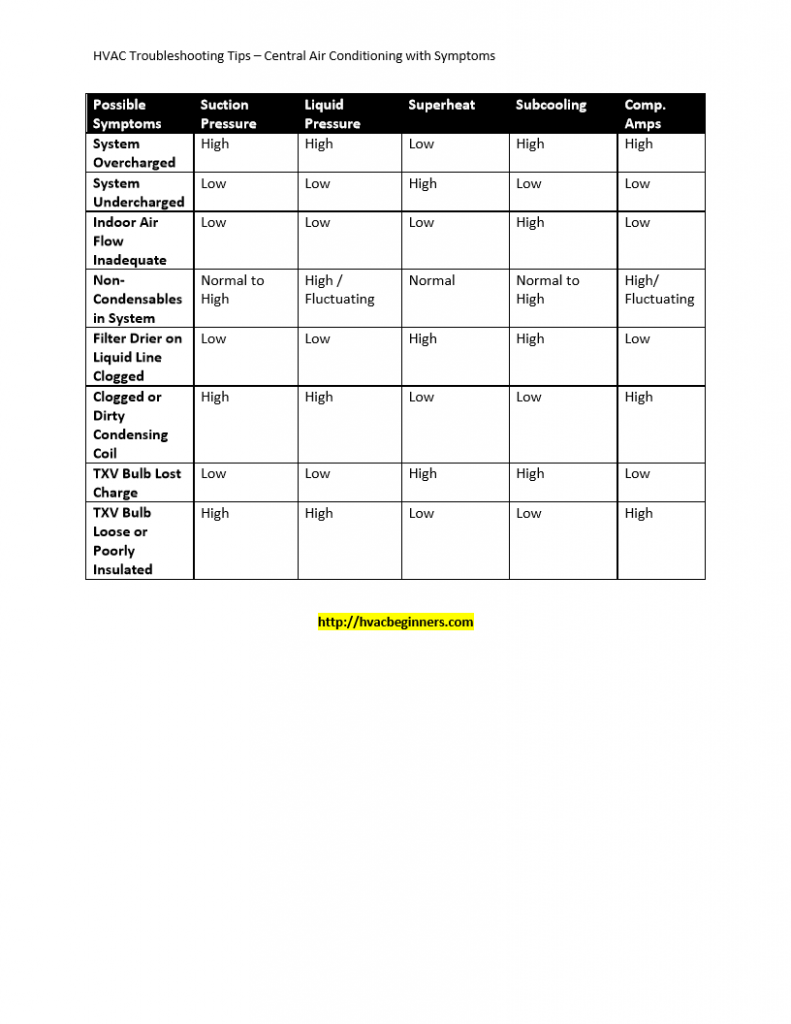
Troubleshooting Refrigerant Charge on Central Air Conditioners HVAC
R-410A has been the refrigerant of choice in residential and light commercial cooling systems since 2010, when federal government regulations mandated that new air conditioners and heat pumps could no longer be manufactured using R-22. Since then, the production of new R-22 has been slowly winding down and will stop completely at the end of 2019, although reclaimed R-22 will be available to.

Printable Refrigerant Pt Chart
Warning: Do not attempt to troubleshoot refrigerant charge on central air conditioning units unless you are EPA 608 type II Certified. This article refers to troubleshooting refrigerant charge on 410a and R22 residential air conditioning systems. Although many of the principles will carry over to other types of refrigerants and drop-ins. I will be sharing a pressure chart that may help you.

Refrigeration Superheat Refrigeration Cycle
Its a refrigerant to oil charge limit for manufactures. The more refrigerant and the less oil amount will result in more migration. Use a pump down cycle so all the refrigerant is removed from the low side of the system. Sign up on Refrigeration Mentor and get full a Free Compressor troubleshooting guide! Liquid Floodback
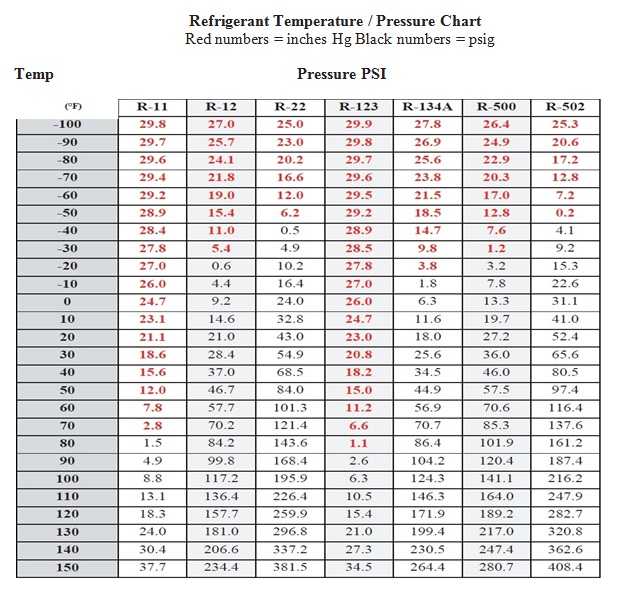
Refrigerant Temperature Pressure Chart HVAC How To
Refrigerant Malfunction Troubleshooting Chart October 05, 2023 14:29; Updated Refrigeration System Malfunctions.
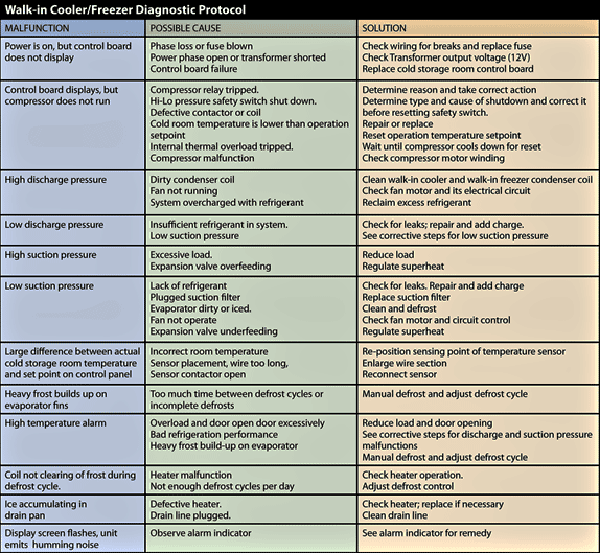
Refrigeration Problems Commercial Refrigeration Repair In Myrtle Beach
Attach a pressure/vacuum module to a DMM and set the module to cm/in. Hg. Connect the module at the suction line service port. Close the compressor off from the low side of the system by front seating the suction service valve. Run the compressor for two minutes. Turn off the compressor and observe the reading.

Refrigerant Troubleshooting Chart
HVAC Air / Refrigerant Diagnostic Quick Sheet Electric Heat Furnace Clocking a Gas Meter Testing Capacitors Under Load 6-9 SEER = 30º 10-12 SEER = 25º 13-15 SEER = 20º 16+ SEER = 15º AC at 400 CFM/Ton =35º Refrigeration Walk In 10º Refrgeration Reach In 20º Gas Appiance Outlet Pressure Natural Gas 3.5" wc / LP =11ºWC Estimated.

temperaturepressurechart2 R410a Chillers
Systems set at 350 CFM per ton or less are more common today than ever, especially in humid climates. In those cases, the above chart won't apply, and the delta T will be higher. Diagnosing With The Five Pillars This list must be utilized by taking all five calculations and matching up the potential problems until you find the most likely ones.
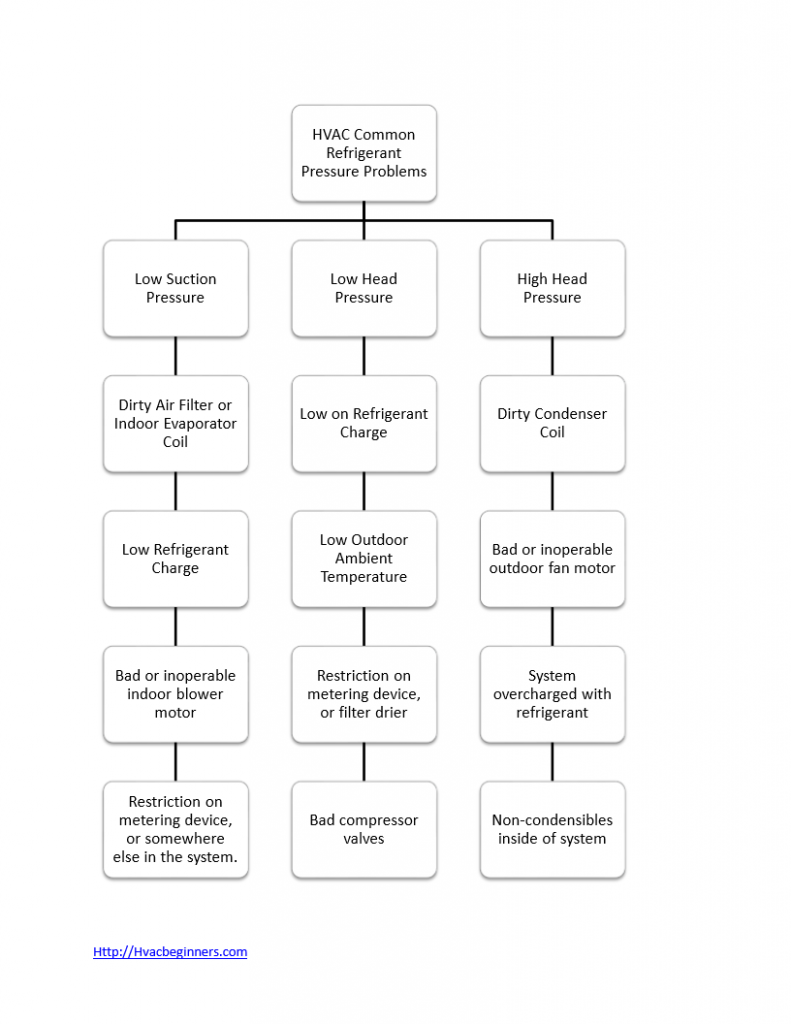
Troubleshooting Refrigerant Charge on Central Air Conditioners HVAC
4 Fluke Corporation Troubleshooting HVAC/R systems using refrigerant superheat and subcooling Measuring liquid line temperature with a DMM and a pipe clamp. Note: Condensing temperature is derived from using the PT chart. On new refrigerant blends with high temperature glide, this is called the bubble point (BP) temperature. See Figure 2. Figure 5.
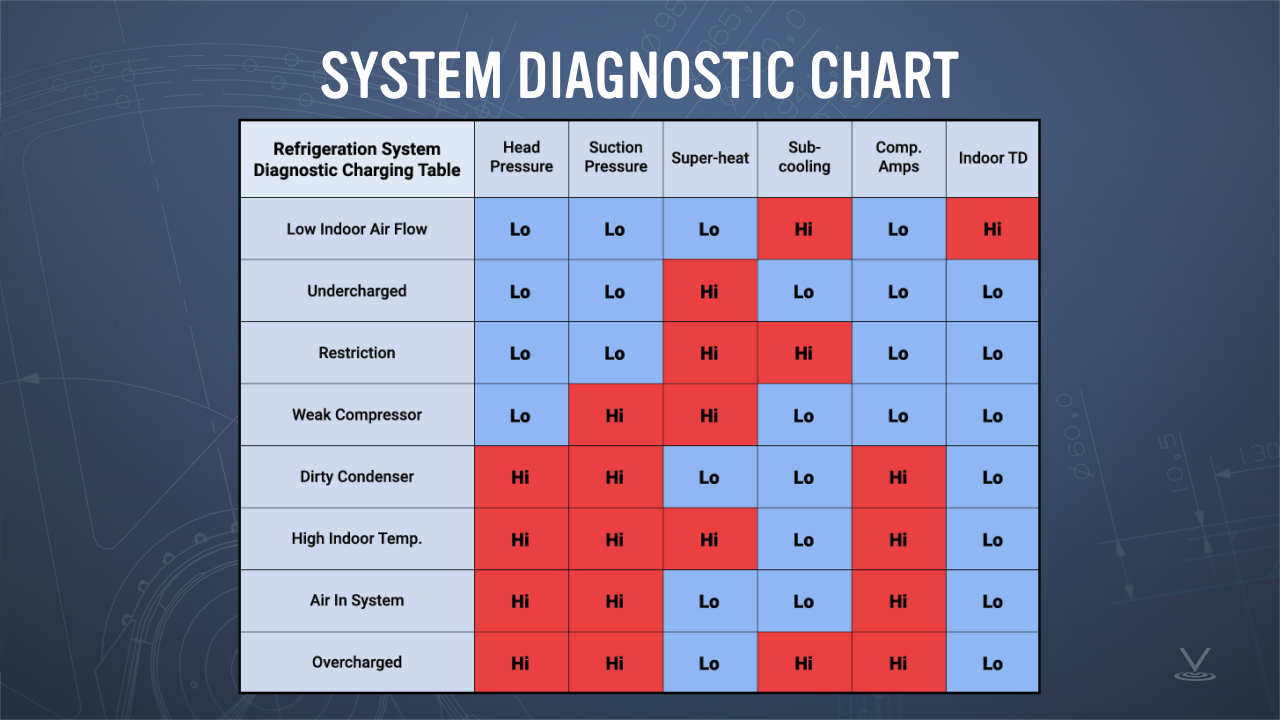
Commercial Building Cooling System Maintenance Online Training
Get information on refrigerant temperatures in this useful chart. Download the Pressure Temperature Chart Reference Guide. R-22 Reference Guide. Ensure your R-22 system runs at peak performance. Download the: Keep your R-22 System Running Longer Reference Guide. Compressor/Condenser Troubleshooting

Flow chart Hvac troubleshooting, Refrigeration and air conditioning
Changes in air conditioner or heat pump operating pressure can be effected by adding or removing refrigerant from the system. Changing the amount of refrigerant will cause a pressure change at the point where the refrigerant changes state. Normally an HVAC technician will charge the system to its recommended pressure and we won't vary the total.

Refrigerant Troubleshooting Chart
7 Compressor low oil pressure. 8 How to know if a refrigeration system on low lube oil pressure: 8.1 Chocked oil filter. 8.2 Oil separator blockage preventing oil return to the compressor. 8.3 Troubleshooting Oil Carryover in Refrigeration Systems. 8.4 Bearing wear within the compressor.

Troubleshooting Refrigeration And Air Conditioning, Air Conditioning
Here's a step-by-step guide on how to read a refrigerant P-H chart: 1. Understand the axes: The P-H chart typically has the pressure (P) axis on the y-axis and the enthalpy (H) axis on the x-axis. The pressure is usually measured in units like psi, kPa, or bar, while the enthalpy is measured in units like Btu/lb, kJ/kg, or kcal/kg.
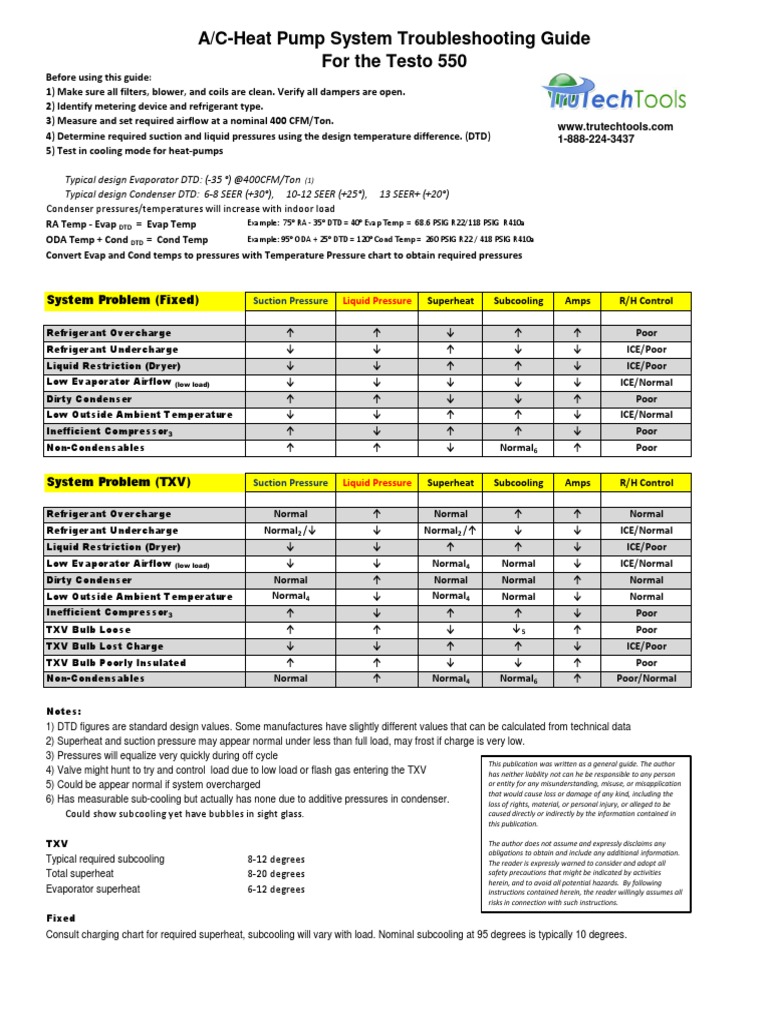
AC & Heat Pump Troubleshooting Guide Air Conditioning Heat Exchanger
Troubleshooting. Let's apply the system checklist to a refrigeration system that is not operating properly. Assume that this system has components that were originally sized properly and are still in operation. The system is a low-temperature, TXV/receiver system that uses R-134a as the refrigerant, and the desired box temperature is 50°F.
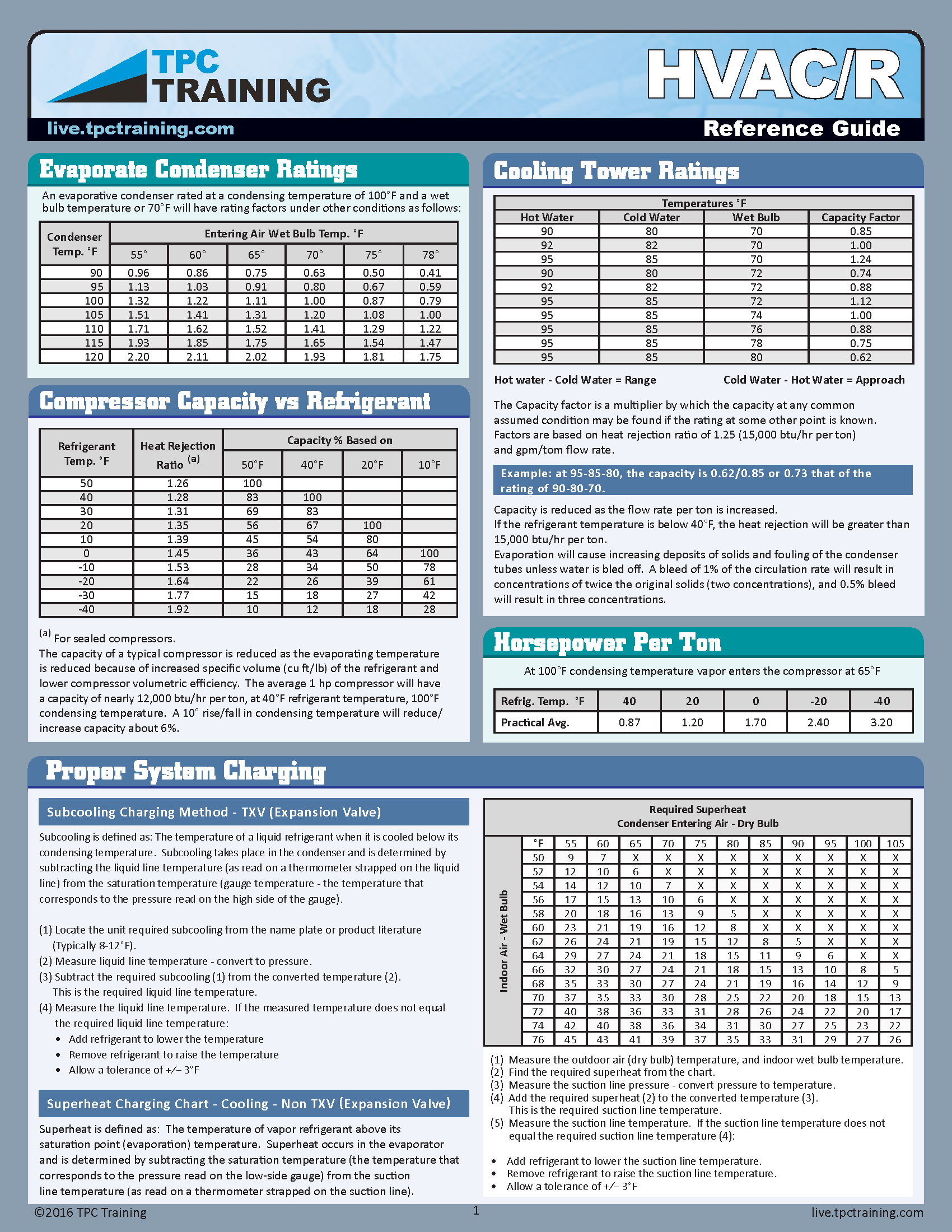
Quick Reference Guide HVAC/R
Parker-Sporlan for temperature/pressure chart and TEV images, RSES Journal & Indoor Comfort News & ACHR News readers who have helped in contributing to the development of troubleshooting problems, and to the students in my trade school classes and technicians who have attended my workshops and were not afraid to ask questions.